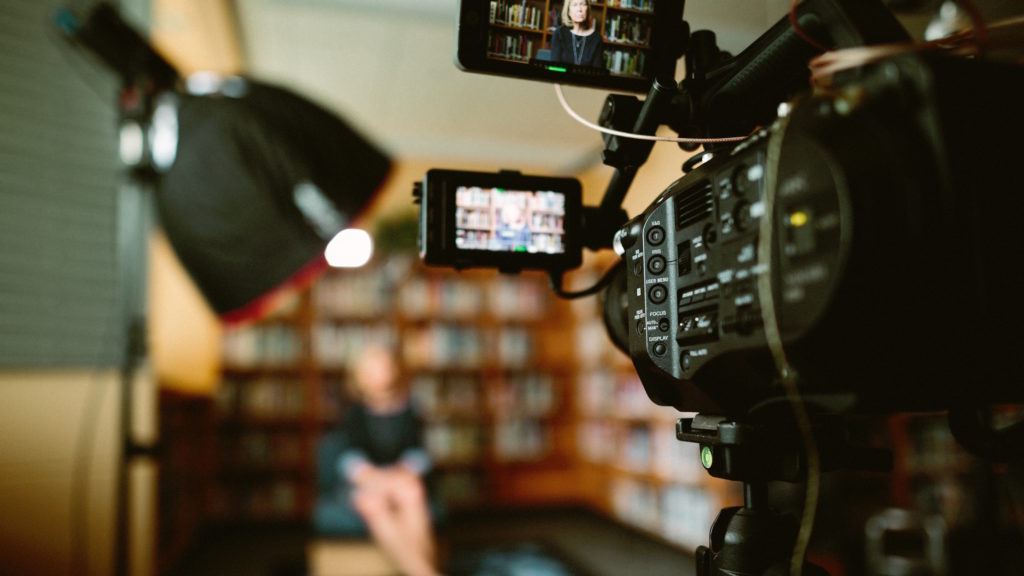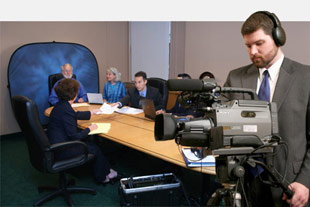Legal Videography: An Innovative Approach to Recording Legal Testimonies
Why Legal Videography Is Essential for Accurate Court Recordings
The duty of lawful videography in courtroom settings can not be overstated, as it offers as an essential device for protecting the stability of court records. By recording both spoken and non-verbal communication, it improves the clarity of witness testaments and shows the nuances of courtroom interactions. This comprehensive documents not just aids in reducing possible misunderstandings however also sustains appellate evaluations, thus reinforcing the judicial procedure. The ramifications of incorporating legal videography right into conventional court room methods elevate essential inquiries about its wider impact on the lawful system. What might these effects involve?
Relevance of Visual Evidence
In the realm of lawful proceedings, the relevance of visual proof can not be overstated. Visual proof functions as a powerful device in developing facts, proving testaments, and enhancing the general clarity of a situation. This sort of evidence, which includes pictures, videos, and representations, can give a tangible context that verbal descriptions usually lack, therefore offering juries and courts a clearer understanding of the situations bordering a case.
Furthermore, aesthetic evidence help in the retention of information. Human cognition is inherently visual, and individuals are more probable to keep in mind and comprehend info provided in an aesthetic format. In the courtroom, this can be essential, as compelling visual proof can persuade point of views and enhance the story presented by lawful reps.
Additionally, making use of visual evidence can minimize misunderstandings and ambiguities that frequently occur from verbal exchanges. By providing a direct depiction of occasions, visual evidence helps to eliminate subjective interpretations and cultivates an extra objective examination of the realities. The combination of visual proof right into legal process not just strengthens the honesty of the judicial procedure but also boosts the probability of achieving a simply result.
Capturing Non-Verbal Signs
Using advanced videography methods can considerably boost the capture of non-verbal hints throughout lawful proceedings. Non-verbal communication, consisting of facial expressions, body movement, and eye get in touch with, plays a vital role in sharing emotions and purposes that may not be clearly stated in spoken testimony. legal videography. Lawful videography uses high-definition video cameras and strategic angles to make sure that these subtle cues are tape-recorded with clearness and accuracy
The ability to evaluate non-verbal actions can provide important context to declarations made throughout court sessions. A witness's reluctance or confidence can be translated via their posture or gestures, potentially influencing the jury's understanding of integrity. The use of close-up shots can aid concentrate on an audio speaker's expressions, permitting for a more nuanced understanding of the testimony.
Additionally, incorporating numerous video camera angles can produce a thorough view of interactions, highlighting dynamics between events involved. This multifaceted method not only improves the precision of the court record but likewise aids in protecting the honesty of the judicial procedure - legal videography. Inevitably, recording non-verbal cues through legal videography fosters a richer, much check this site out more full depiction more helpful hints of court room process

Enhancing Statement Dependability
The integrity of statement can be considerably reinforced through making use of high-grade legal videography. Video recordings act as an unbiased medium that captures not just the talked words of witnesses yet also the nuances of their shipment, including tone, pacing, and emotional expressiveness. This complex documentation gives a clearer understanding of the witness's reputation and objectives, which can be crucial in legal procedures.
Moreover, legal videography decreases the potential for false impressions that may occur from created records alone. When jurors can observe a witness's attitude and body movement in conjunction with their statement, they are much better equipped to evaluate the credibility and integrity of the evidence presented. This aesthetic context can enhance the testimonial story, making it much more engaging and credible.
Furthermore, the existence of a video clip recording can deter potential variances in testament. Witnesses might be more careful in their statements when they know they are being taped, bring about even more exact and truthful accounts. Overall, premium legal videography improves the stability of statement, making certain that the court has why not try these out accessibility to a full and genuine depiction of the realities as shared by the witnesses.
Sustaining Appeals and Reviews
Lawful videography plays a crucial role in supporting appeals and reviews by providing a comprehensive visual document of court room process. This aesthetic paperwork catches not just the spoken words of witnesses and attorneys but also the nuances of body language, tone of voice, and court room characteristics. Such components can be essential in comprehending the context of statements and arguments presented.
In the appellate procedure, where the emphasis gets on errors of law and procedural justness, a video clip record can work as an essential device for appellate courts. It allows judges to review the initial trial context, guaranteeing that decisions are based upon a total understanding of the procedures. The ability to aesthetically examine the behavior of witnesses or the interactions between events can expose insights that written records may neglect.

Furthermore, lawful videography can help in clarifying ambiguities in testaments or procedural judgments, consequently strengthening the basis for an allure. By providing a reliable, objective account of what taken place in court, legal videography not only sustains the integrity of the lawful process yet also equips all events involved to make enlightened decisions regarding their instances.
Simplifying Courtroom Processes
Enhancing court performance, legal videography improves procedures by giving immediate access to visual records of procedures. This innovation permits courts, lawyers, and courts to revisit crucial statement and proof, making sure that all events have a clear understanding of the instance. By recording the subtleties of spoken and non-verbal interaction, videography improves the document, making it less complicated to comprehend the context and weight of testaments.

In addition, video recordings can facilitate remote engagement in hearings, permitting greater adaptability in scheduling and engagement, which is especially valuable in complicated cases including multiple stakeholders.
Verdict
To conclude, lawful videography plays a vital function in ensuring precise court recordings by providing crucial visual proof that captures both verbal and non-verbal communication. This practice improves the integrity of testaments, supports appellate reviews, and improves court processes. By cultivating a comprehensive understanding of court room dynamics, lawful videography ultimately adds to much more fair judicial end results, strengthening the honesty of the lawful system and helping with notified decision-making.